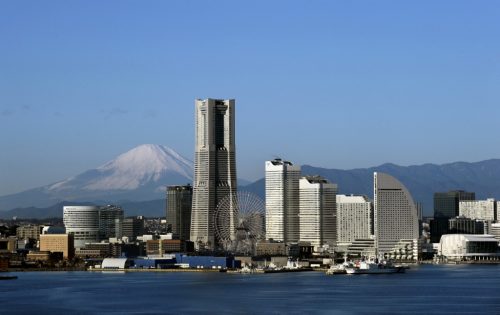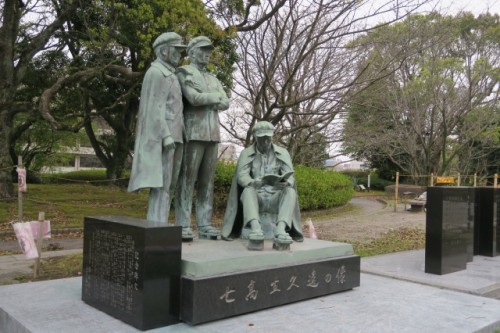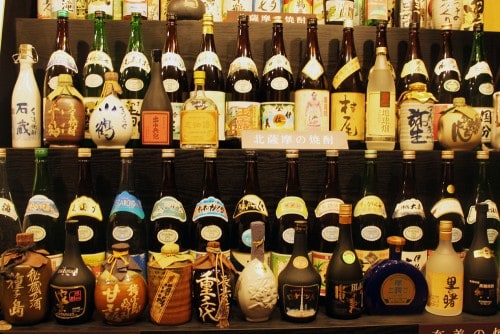The queue snaked several times within the premises and extended outside, nearly around the corner, far longer than I anticipated. “I was kind of naive wasn’t I?” I muttered to myself, resigned to the wait at the Museum of Contemporary Art Tokyo. Like the hundreds, or maybe thousands ahead, I’d booked in advance, yet hadn’t accounted for the immense draw of the exhibition Ryuichi Sakamoto | seeing sound, hearing time — even on a weekday.
Behind me, an older woman mirrored my surprise. We shared a chuckle at the irony; of course, interest would be sky-high. Nearly two years after Sakamoto’s untimely passing in March 2023, I’d underestimated the legions eager to honor him at the MOT. I ended up waiting for about one hour, during which time I took the chance to think about how I would articulate this piece. For those unfamiliar with Sakamoto’s work, the fact that a prominent Tokyo museum is celebrating his legacy speaks volumes about his towering influence as a contemporary artist beyond the musical field.
But instead of listing his achievements (which can easily be found on Google and Wikipedia), I‘d rather discuss Sakamoto’s work by sharing my favorite albums as I discovered them. His music has been a constant companion throughout the past two decades. Its versatility and the way his minimalistic compositions express emotion with surgical precision have always resonated with me, so please allow me to tell you about it in the order I followed.
Toni Takitani (OST) (2004)
This was a double hit. I first discovered his music through this adaptation of Haruki Murakami’s short story, which promptly sent me into a rabbit hole of both creators. In this soundtrack, Sakamoto matches the muted melancholy of Murakami’s meditation on solitude. His sparse piano compositions spoke gently but clearly, subtly echoing the protagonist’s sense of isolation and emotional quietness, as though Sakamoto knew precisely which emotions to reveal and exactly how much to hold back.
I had moved on my own to Barcelona the previous year, and the duality of my introverted-extroverted nature was faced with a mirror in each note reflecting Murakami’s narrative style: understated, poignant, and somewhat existentially detached. The soundtrack felt like an eloquent voice deepening the film’s emotional impact, speaking volumes while barely raising its voice above a whisper.
My favorite tracks:
- DNA Intro
- Solitude
I found out later that Sakamoto had immersed himself in Haruki Murakami’s quiet, meditative storytelling style, and at the same time, he was increasingly interested in understated narratives and minimalist expression compared to previous works including soundtracks, which made it feel like a shared journey of sorts.
BTTB (Back To The Basics) (1999)
Parsing through Sakamoto’s discography at the time, BTTB felt the most fitting to continue listening to. Released five years prior, music is stripped down to its raw essence: a single piano and a quietly confident composer. At the time I didn’t know that the track Energy Flow was a surprise hit, becoming the first instrumental track ever to reach number one on the Japanese charts. It was no wonder that the country had surrounded itself to the quiet and beautiful melancholy of this piece.
There was something tremendously comforting about this album, which to this day remains one of my favorites when I need to wind down. You see, I was a failed piano player. In the sense that I often joke that I spent seven years failing at piano. Music was an important part of education on my mother’s side of the family but she didn’t have fond memories of her strict solfège lessons and thus wanted to spare me the boring and more strict bits of musical training.
But my small and clumsy hands were not very compatible with the nuances of piano playing requirements and a lack of solid foundation made me struggle with complex sheet music so eventually, I just gave up. BTTB’s simplicity reconciled me with listening to piano and letting go of the lingering regret that came with it.
My favorite tracks:
- opus
- Energy Flow
Insen (2005)
For a change of pace, this collaboration with German electronic minimalist composer Alva Noto (Carsten Nicolai), is essentially the most stimulating kind of musical alchemy: Sakamoto’s piano integration into Noto’s microscopic electronics and rhythmic textures. The result is a soundscape that feels both abstract and emotional, if that makes sense. Long before the ASMR craze, the sensorial pleasure of brain-tickling sound was being explored through digital versus acoustic, human versus machine in the most trance-inducing fashion.
My favorite tracks:
- Moon
- Berlin
At the time, Sakamoto had been based for some time primarily in New York, but regularly moving between Tokyo, Berlin, and other international creative hubs, finding himself at the forefront of an avant-garde movement that mixed classical instrumentation with experimental digital soundscapes. This collaboration would be one of many, and a turning point where he was no longer chasing mainstream appeal but rather focused on challenging himself artistically.
Thousand Knives (1978)
Digging through Sakamoto’s more electronic sounds, I landed on Thousand Knives, and I immediately understood why it was a cult classic and a seminal work for a lot of what would come during the following decade. Synthesizers were still relatively new and mostly uncharted terrain — except for the German band Kraftwerk, themselves a large influence on Sakamoto — and his bold mix of electronics, jazz, and Japanese melodies was drawing an entirely new map.
During the mid-2000s, 80s synth-pop and New Wave experienced a resurgence in Barcelona’s musical scene among the crowd in our early to mid-20s, which helped me to ease the feeling of arriving decades late to these musical treasures. Digital music-sharing platforms at the time were the bane of the industry but for my generation, it was a haven that allowed us to discover and develop a curated musical taste outside of the boring mainstream pop plaguing everywhere you looked at.
My Favorite Tracks:
- Thousand Knives
- Plastic Bamboo
This album felt like the culmination of Japan’s late 70s cultural experimentation era. Sakamoto eagerly embraced these tools to transcend boundaries with the influences of Tokyo’s underground venues and its bubbling experimental music scene. Around the same time, he founded Yellow Magic Orchestra with Haruomi Hosono and Yukihiro Takahashi, a band that would soon catapult him into pop stardom.
Merry Christmas, Mr. Lawrence (1983)
In 1983, Ryuichi Sakamoto crafted a beautifully haunting musical score with Merry Christmas, Mr. Lawrence, composed for director Nagisa Oshima’s emotionally charged war film. Featuring David Bowie, and Sakamoto himself in his film-acting debut, the film deals intimately with complex themes of cultural clash, human conflict, and emotional vulnerability. The soundtrack became instantly iconic, revered not just as film music but as a standalone work.
My Favorite Tracks:
- Merry Christmas, Mr. Lawrence
- Germination
- Forbidden Colours (Merry Christmas Mr. Lawrence vocal version featuring David Sylvian. I also recommend the orchestral version featured in Sakamoto’s Cinemage album).
Any trace of ambiguity is dispelled by the title choice of Forbidden Colours which is taken from Yukio Mishima’s 1951 novel of the same name. The title is a euphemism for forbidden love or same-sex love, in regards to Captain Yonoi’s obsession with Major Celliers (Sakamoto and Bowie, respectively).
Bricolages (2006)
This is a really fun one. Here, Ryuichi Sakamoto opened his vault of musical ideas for others to reinterpret, with results ranging from brilliance to chaos. So, if you ever wondered what a creative collision of Sakamoto’s minimalist compositions with innovative remixes would look like, this is an essential eclectic collection.
Electronic luminaries such as Alva Noto, Taylor Deupree, Fennesz, and others reimagine Sakamoto’s delicate originals from his 2004 album Chasm, with glitchy textures, ambient noise experiments, and electronic manipulations, bringing a fresh twist to the package and reinforcing his constant musical innovation.
My Favorite Tracks:
- undercooled (Alva Noto remix)
- World Citizen (Taylor Deupree remix)
I found this openness especially significant considering that Sakamoto, a veteran in music by then, willingly placed his carefully crafted compositions into the hands of experimental artists, demonstrating trust and curiosity rather than ego or protectiveness. At the time I was still juggling my journalism studies with photography school, and kept feeling drawn to Bricolages as an inspiration of what artistic maturity probably looked like.
async (2017)
I feel conflicted about this one. async was Ryuichi Sakamoto’s deeply personal response to mortality, beauty, and the ephemerality of life itself. Released after an eight-year break, marked by his struggle with throat cancer, the album radiates emotional honesty, introspection, and once again deliberate experimentation. It came out during a hectic year for me, to put it mildly, when a series of personal circumstances culminated in moving from Barcelona to Tokyo.
This album can be understood as an audio diary, intensely personal, deeply textured, and profoundly moving. Sakamoto’s compositions here drift through ambient soundscapes, fragmented melodies, and field recordings, creating music that feels organic and fragile, in a melancholic meditation of one’s own vulnerability. The syncopated nature of fragmented sounds echoed the chaos that came with rearranging my adult life and dealing with everything that comes when deciding to settle again at the other end of the world. At the time, it seemed Sakamoto would eventually defeat cancer.
But looking back, this album’s themes come with a deep sense of loss. I lost my mother to cancer three days before Sakamoto’s passing, so now async comes with a complex set of emotions. The conceptual power of the album is heightened by subtle yet emotionally charged spoken-word samples. fullmoon, featuring a reading from Paul Bowles’ The Sheltering Sky, poignantly echoes the themes of existential reflection, mortality, and human impermanence.
Life is fleeting, and so is grief.
Meaningful Tracks:
- solari
- fullmoon
Ryuichi Sakamoto’s Legacy
Unsurprisingly, several of async‘s themes are reflected in the MOT exhibition, among several installations meant for audiences to experience music with all of their senses, playing with perceptions or linear order. His sound experiments allow for a profound exploration of Sakamoto’s pioneering journey through sound, technology, and visual art, featuring both iconic works and previously unseen installations conceived shortly before his passing.
It’s challenging to capture the essence of a lifelong pursuit aimed at transcending musical boundaries and exploring the intersections of sound and time. While I could elaborate further, I hope this deeply personal Ryuichi Sakamoto selection I’ve shared with you sparks your interest in exploring the works of Japan’s greatest contemporary musician.







No Comments yet!